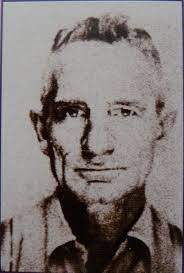Annotation:Danseuse (La): Difference between revisions
No edit summary |
No edit summary |
||
| (7 intermediate revisions by the same user not shown) | |||
| Line 1: | Line 1: | ||
{{TuneAnnotation | {{TuneAnnotation | ||
|f_annotation='''DANSEUSE, LA''' (The Dancer). Cajun, "Fox-Trot". USA, Louisianna. F Major. Standard tuning (fiddle). ABB'. "La Danseuse" was recorded in 1929 by guitarist Alcide [[wikipedia:Blind_Uncle_Gaspard]] (1878-1937) and fiddler Delma Lachney (1896-), | |f_annotation=[[File:Lachney.jpg|right|340px|thumb|Delma Lachney [My Old Weird America https://oldweirdamerica.wordpress.com/2009/12/14/31-la-danseuse-by-delma-lachney-blind-uncle-gaspard/].]]'''DANSEUSE, LA''' (The Dancer Girl). Cajun, Two-Step (Smith calls it a "Fox-Trot"). USA, Louisianna. F Major. Standard tuning (fiddle). ABB'. "La Danseuse" was recorded in 1929 by guitarist and singer Alcide [[wikipedia:Blind_Uncle_Gaspard]] (1878-1937) of Avoyelles Parish and fiddler (Adelma) Delma Lachney (1896-1949), from nearby Marksville, central Louisiana. The two travelled to a frigid Chicago in January, 1929, sponsored by a Marksville furniture and record store owner, and recorded ten sides for Brunswick Records (there was another recording date in New Orleans, about a month later). Several of the sides were of Gaspard singing and playing, without Lachney, and it is unclear if they had played together for very long before the trip. Altogether, very little is known about the musicians, whose record sold poorly and is quite rare. Lachney was a farmer for most of his life, and was a left-handed fiddler who played for house parties and social gatherings with friends and family members. He was a member of various local bands, playing country music and fiddle tunes along with his Cajun repertory into the mid-1940's. It is possible "La Danseuse" is his composition. | ||
<br> | <br> | ||
<br> | <br> | ||
Harry Smith (Folkways FA2952, 1952) | Harry Smith (Folkways FA2952, 1952) attempts to contextualize the recording in his anthology: | ||
<blockquote> | |||
''The distinctiveness of the Arcadian<ref>"Arcadian" is Smith's word referring to what is usually called Cajun or Creole. </ref> violin-guitar'' | |||
''combination is immediately noticeable, for not only is the melody itself of a type rather foreign to the Anglo-American pattern, but the'' | |||
''steady and regular unison rhythm (as opposed to the slightly contrapuntal relationships (on Appalachian tunes) is very typical of Louisiana.'' | |||
''Taylor Grigg's Louisiana Melody Makers (Victor 1928-1930) were a contemporary string group with a highly perfected rhythm of this sort, and'' | |||
''very pure examples can be found among recordings made in New Orleans within the last ten years. The distinctive regional playing of the Texas'' | |||
''and Oklahoma string bands (Light Crust Dough Boys, Bob Wills, Bill Boyd, Jimmy Revard, etc.) during the depression and until World War II,'' | |||
''developed as an off-shoot from Louisiana about 1920, possibly when oil workers from there went to Texas.'' | |||
</blockquote> | |||
|f_printed_sources=Will Welling ('''Welling's Hartford Tune Book'''), 1976; p. 16. | |f_printed_sources=Will Welling ('''Welling's Hartford Tune Book'''), 1976; p. 16. | ||
|f_recorded_sources=Folkways FA 2952, "Anthology of American Folk Music: vol. 2, Social Music" (1952). Vocalion 5303 (78 RPM), Delma Lachney and Blind Uncle Gaspard (1929). | |f_recorded_sources=Folkways FA 2952, "Anthology of American Folk Music: vol. 2, Social Music" (1952). Vocalion 5303 (78 RPM), Delma Lachney and Blind Uncle Gaspard (1929). Yazoo 2042, Blind Uncle Gaspard, Delma Lachney & John Bertrand - "Early American Cajun Music Classic Recordings from the 1920's" (1999). | ||
|f_see_also_listing=Hear Delma Lachney & Blind Uncle Gaspard's 1929 recording at youtube.com [https://www.youtube.com/watch?v=2lhx8FNlYjs] | |f_see_also_listing=Hear Delma Lachney & Blind Uncle Gaspard's 1929 recording at youtube.com [https://www.youtube.com/watch?v=2lhx8FNlYjs] | ||
|f_tune_annotation_title=https://tunearch.org/wiki/Annotation:Danseuse_(2)_(La) > | |f_tune_annotation_title=https://tunearch.org/wiki/Annotation:Danseuse_(2)_(La) > | ||
Latest revision as of 19:54, 6 July 2021
X:1 T:Danseuse, La S:Delma Lachney (Avoyelles Parish, La.) M:C L:1/16 Q:"Moderately Quick" N:There is a lot of variation in the first few measures of the 2nd strain. Parts are N:sometimes doubled, sometimes not. Lachney's touch on the fiddle is light. D:Vocalion 5303 (78 RPM), Delma Lachney and Blind Uncle Gaspard (1929) D:https://www.youtube.com/watch?v=2lhx8FNlYjs Z:Andrew Kuntz K:F f2ff c2cc A2cc d2cc|A2cc ddcA F2A2 c2cc|c2((3fgf e2)A2 c2cc c2((3BcB | A2)G2 G2F2 F4 D2F2||:[D4B4][D8B8] D2F2|[F4d4][F4d4][F2A2][F2d2][F4c4]|[M:2/4]A2F2 ABce| [M:C]f2AB c2cc c2((3fgf e2)AA |A2((3BcB A2)G2 G2FFF4|1ccde f2cc f4F4:|2 ccde f2f2f2z2||

Harry Smith (Folkways FA2952, 1952) attempts to contextualize the recording in his anthology:
The distinctiveness of the Arcadian[1] violin-guitar combination is immediately noticeable, for not only is the melody itself of a type rather foreign to the Anglo-American pattern, but the steady and regular unison rhythm (as opposed to the slightly contrapuntal relationships (on Appalachian tunes) is very typical of Louisiana. Taylor Grigg's Louisiana Melody Makers (Victor 1928-1930) were a contemporary string group with a highly perfected rhythm of this sort, and very pure examples can be found among recordings made in New Orleans within the last ten years. The distinctive regional playing of the Texas and Oklahoma string bands (Light Crust Dough Boys, Bob Wills, Bill Boyd, Jimmy Revard, etc.) during the depression and until World War II, developed as an off-shoot from Louisiana about 1920, possibly when oil workers from there went to Texas.
- ↑ "Arcadian" is Smith's word referring to what is usually called Cajun or Creole.

